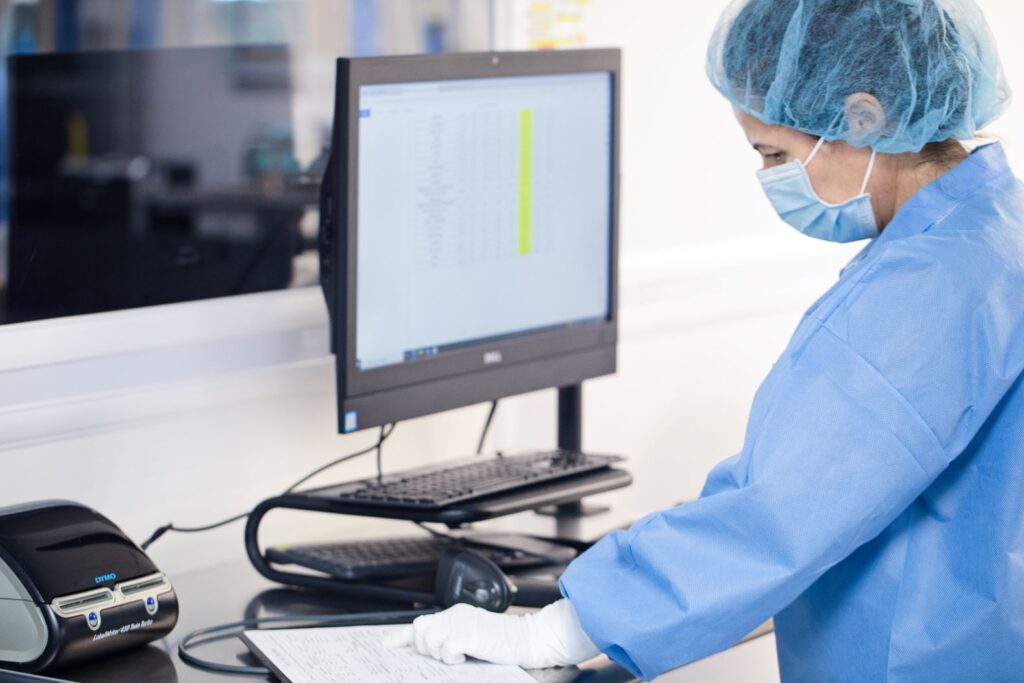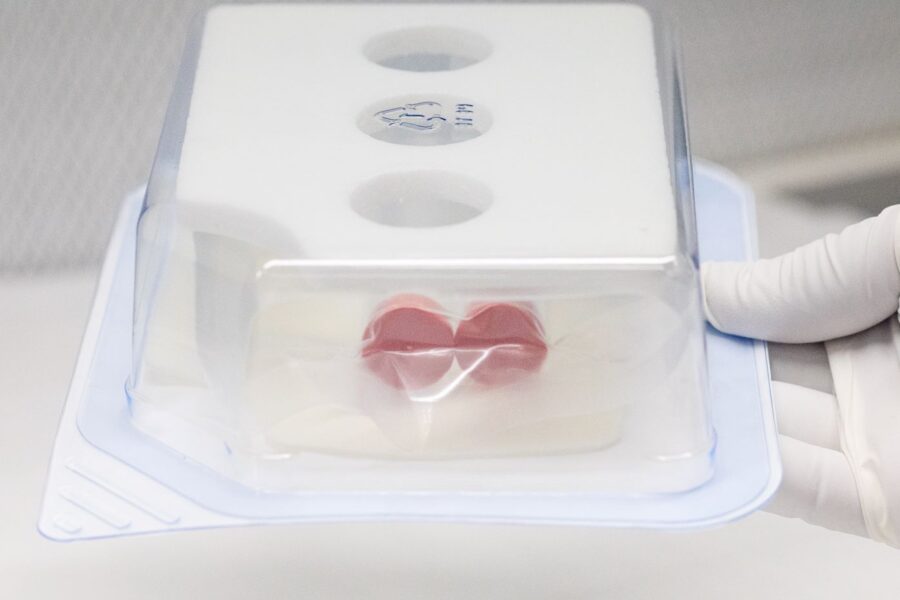Imagine developing a medical device that not only meets strict regulatory requirements but also launches faster, with lower production costs. That’s the advantage of integrating packaging and assembly early in the medical device product development cycle.
Often considered too late in the process, packaging is in fact a core element of how your medical device is manufactured, perceived, sterilized, and used. Prioritizing packaging and assembly from the outset ensures your development team aligns regulatory compliance, logistics, and end-user considerations, setting the foundation for long-term market success.
Why Early Packaging Strategy Is a Game Changer
A thoughtful packaging and assembly strategy has ripple effects throughout the entire product lifecycle. From clinical usability and sterilization compatibility to distribution and regulatory documentation, every decision made early can dramatically improve outcomes downstream. Let’s see how:
1. Reduces Overhead Costs and Production Delays
One of the most immediate benefits of early integration is cost control. In medical device manufacturing, late-stage packaging decisions can trigger costly delays and revalidations. Common issues include packaging materials incompatible with sterilization methods or designs that don’t meet ISO 11607-1:2019 standards.
Integrating packaging and assembly early in the development process helps teams:
- Avoid redesigns caused by overlooked compatibility or sterilization issues
- Select validated, cost-effective materials aligned with device classification
- Ensure packaging meets distribution simulation testing (ASTM D4169 or ISTA 3A)
This proactive approach also enhances manufacturing throughput by removing bottlenecks, minimizing labeling errors, and streamlining labor-intensive processes.
2. Improves Clinical Usability and Labeling Compliance
Beyond cost and speed, early packaging strategy significantly improves product usability. In healthcare settings, packaging must support infection control, intuitive use, and clear instructions. Design choices affect how safely and effectively healthcare professionals interact with your device.
When usability is addressed from the outset, teams are positioned to:
- Integrate human factors engineering into labeling and packaging layout (per FDA guidelines and IEC 62366)
- Validate IFUs (Instructions for Use) and ensure compliant openability in clinical environments
- Ensure compatibility with operating room protocols and hospital storage formats.
This ensures your product is not only safe and effective, but also usable under real-world conditions, supporting both clinician satisfaction and patient outcomes.

3. Supports Iterative Development & Validation
In parallel with clinical usability, early packaging involvement supports the iterative nature of medtech development. While pure “agile” is uncommon due to strict change control, many companies adopt hybrid models that allow for early testing and refinement ahead of submission.
Early collaboration with packaging engineers enables teams to:
- Pre-validate multiple packaging formats for pilot studies
- Reduce rework during the design freeze and validation phases
- Streamline verification protocols by involving packaging engineers from the start.
This level of alignment ensures smoother transitions through verification and validation (V&V), minimizing costly last-minute changes and regulatory setbacks.
Packaging Validation & Sterilization Compatibility
As the device design takes shape, another critical area emerges: validation and sterilization. These are non-negotiable in regulated markets, and packaging must be engineered to meet exacting standards.
In medical device development, packaging must be validated to ensure sterility, integrity, and performance throughout its shelf life and distribution. Starting this process early is essential.
Key considerations include:
- Sterile barrier integrity testing (ISO 11607-1/2)
- Material compatibility with sterilization methods like EO, gamma, or steam
- Accelerated aging and real-time shelf-life studies (ASTM F1980)
- Transportation simulation testing (ASTM D4169)
- Seal strength, burst, and dye penetration testing.
Aligning packaging choices with sterilization and validation requirements early on helps avoid downstream bottlenecks in regulatory review and prevents delays in bringing products to market.
Documentation & Regulatory Readiness
Closely tied to validation is the preparation of technical documentation. Packaging decisions directly influence key regulatory deliverables and audit readiness.
Medical device packaging impacts critical regulatory documents such as the Design History File (DHF), Device Master Record (DMR), and Technical File (EU MDR).
Early packaging and assembly planning helps:
- Ensure accurate BOMs and drawings are available for submission
- Prepare compliant labeling and UDI formats for FDA 21 CFR 801 and EU MDR Article 27
- Align packaging materials and testing with ISO 13485 quality system documentation
- Support technical documentation for notified body review or 510(k)/PMA clearance.
Involving packaging partners from the concept phase ensures documentation is audit-ready and aligned with all regulatory expectations from the start.

Integrating Assembly Early in the Medical Device Development Process
Just as packaging benefits from early involvement, so does assembly. Coordinating both functions in tandem adds significant efficiency and control across the product development timeline.
Medical device development teams operate under tight regulatory timelines, cost constraints, and the need for precision. Integrating an experienced assembly partner like PRO-TECH Design early in development offers strategic value. Here’s how:
- Concept Testing: Include mock-up packaging and assembly workflows in early prototypes to evaluate user needs and sterilization compatibility
- Business Analysis: Quantify packaging and labor costs to inform financial modeling and pricing strategy
- Product Requirements: Define size, material, and labeling needs with packaging in mind to ensure smooth regulatory submission
- Cross-Team Alignment: Synchronize engineers, marketers, and quality assurance with packaging/assembly leads to avoid siloed decision-making
- Design History File & Technical File Preparation: Early packaging planning ensures complete documentation for submission and audits
These steps reduce costly surprises during transfer to manufacturing and empower the team to stay ahead of both technical and regulatory challenges.
The Strategic Edge of Early Integration
Bringing packaging and assembly into the fold from the very beginning isn’t just a best practice—it’s a competitive differentiator. It elevates your development strategy, ensures compliance, and reduces go-to-market risk.
Early integration enables:
- Faster iterations and lower risk during design validation
- Stronger alignment with clinical needs and regulatory requirements
- Improved audit readiness and compliance documentation for global markets.
Medical devices don’t succeed on innovation alone—they rely on execution. Packaging and assembly are integral to that execution.
Choosing the Right Partner for Medical Device Packaging & Assembly
Medical device developers need more than just packaging vendors—they need strategic collaborators who understand the regulatory and operational nuances of the industry.
With over 40 years of experience and ISO 13485 certification, PRO-TECH Design helps clients design, test, and deliver compliant, high-performance packaging and assembly solutions. From early-stage prototyping to full-scale commercialization, our team works as an extension of yours—ensuring technical precision, clinical relevance, and market readiness at every step.
FAQs
- Why is early packaging planning so critical in medical devices?
It prevents costly redesigns, supports early validation, and ensures compatibility with sterilization, labeling, and regulatory pathways.
- How does packaging affect clinical usability?
Medical packaging must support sterile transfer, intuitive opening, and clear labeling to ensure patient safety and clinician efficiency.
- What standards guide medical device packaging?
Key standards include ISO 11607-1:2019 for sterile barrier systems, ASTM D4169 for distribution testing, and IEC 62366 for usability.
- Can an early packaging strategy reduce regulatory delays?
Yes. Packaging decisions affect submissions to FDA, EU MDR, and notified bodies. Early alignment reduces rework and submission risk.
- What’s the role of sustainability in medical device packaging?
Hospitals and GPOs increasingly evaluate environmental impact. Sustainable design can influence procurement decisions and reduce waste disposal costs.

